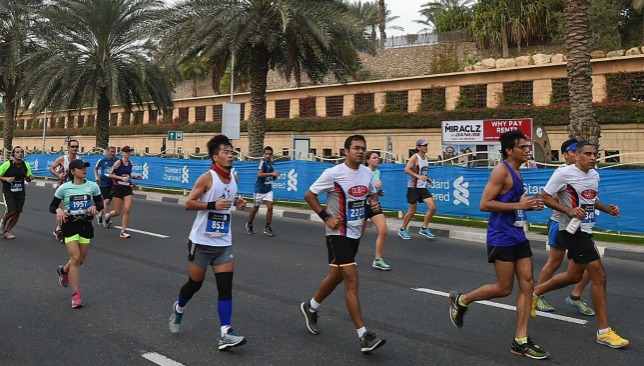
Sport360 takes you through tips for runners and keen fitness enthusiasts to avoid blisters.
Basically, blisters are pockets of skin filled with fluid and they form when layers of the skin (dermis and epidermis) separate.
The main causes are often when your feet rub against your trainers and don’t have enough room to breath, especially when you sweat and run long distances.
As a result, pressure and swelling can form – and an annoying pimple-like spot.
In terms of injuries, and annoying ones at that, they are one of the most common.
They’re not pleasant and are very uncomfortable, especially when your shoes rub against your feet.
Indeed, your feet can often look like a bloody mess after a run or football match.
So, here’s our guidance to keep your feet in top-tip shape:
GET THE RIGHT FOOTWEAR
Making the right choices over footwear will benefit you in the long run (excuse the pun).
Our recent piece on five top tips to buy the right running trainers will help, read it here.
Care and attention when choosing and purchasing footwear is essential – consider the right pair of runners, going out shoes or everyday pair for work as an investment in yourself.
Getting the right fit for your foot will really help avoid blisters and make you feel comfortable. Leave a good amount of room between your toes and the end of the shoe.
For running and exercise – it’s always important you wear in your chosen footwear before, for example, running a marathon.
Make sure your feet have adapted and feel good. Sports socks will also help make you feel just right and avoid wet socks/trainers as that will certainly cause a blister.
With all of the above, most running/footwear shops should be able to guide you through this process nicely.
SHOULD I POP A BLISTER?
A common question, but on the whole, no you shouldn’t.
Popping the blister increases the risk of infection and soreness, but of course, in some cases it is better to do so – especially if the pesky little thing is frequently coming into contact with your feet.
If you wish to do so, pop the blister by taking a fresh needle and from the side, gradually drain out the fluid.
HOW SHOULD I TREAT A BLISTER?
It’s best to let the blister pop of its own accord (a short period of time) but the best course of practice is to apply some antiseptic cream and regular fresh dressage to reduce the risk of infection.
If the blister doesn’t seem to be going away or you’re experiencing soreness and swelling, it’s best to see a doctor.